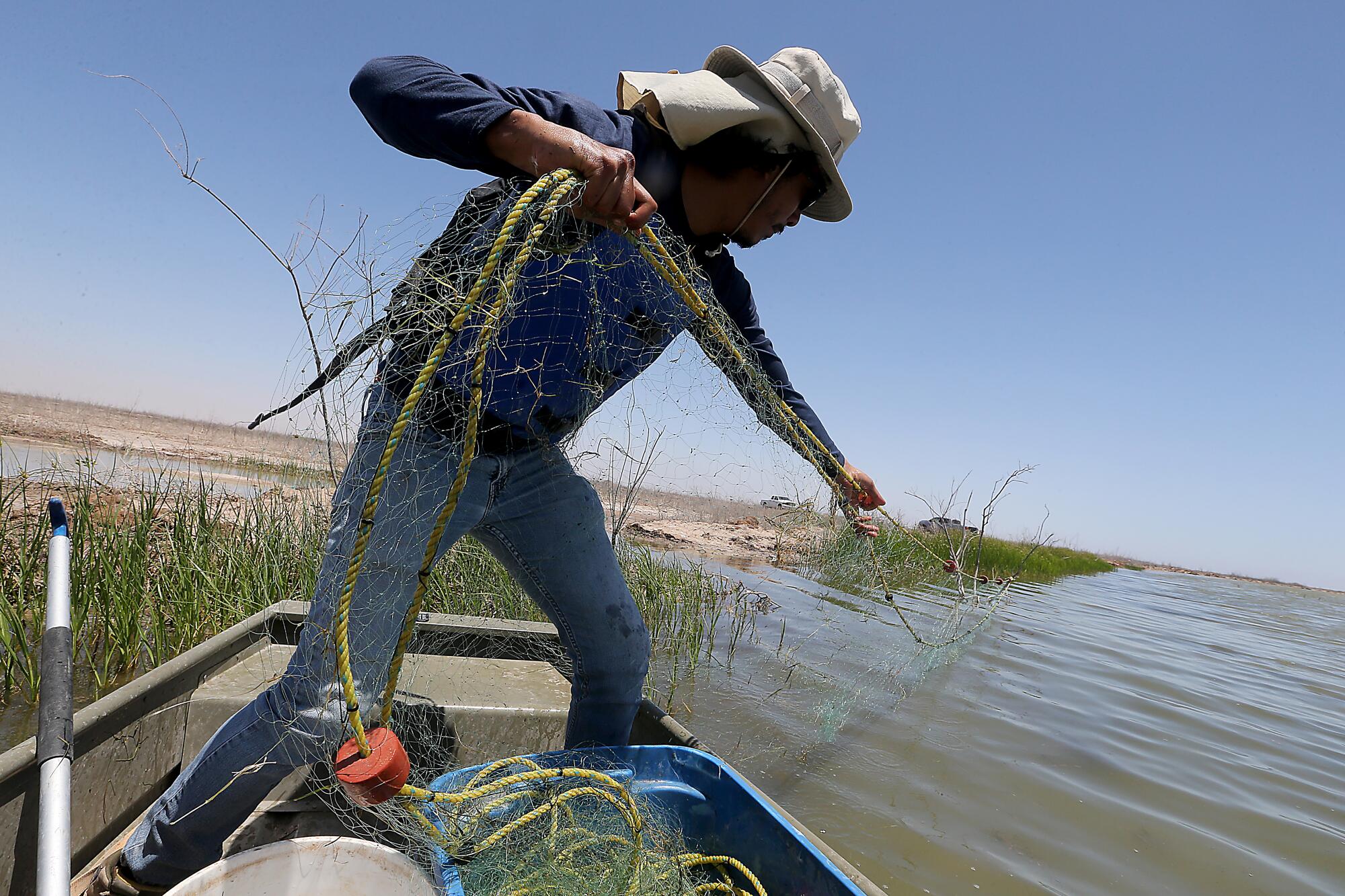
- Share via
EJIDO FRANCISCO MURGUÍA, Mexico — Beside a canal that runs through farmland, rushing water roared through an irrigation gate and flowed down a concrete culvert toward a wetland fringed with cottonwoods and willows.
For decades, so much water has been diverted to supply farms and cities that the Colorado River has seldom met the sea and much of its delta in Mexico has been reduced to a dry riverbed, with only small remnants of its once-vast wetlands surviving.
Over the last eight weeks, water has been flowing in parts of the delta once again, restoring a stretch of river in Mexico where previously there had been miles of desert sand.
The water is being released from an irrigation canal to aid the delta’s parched environment as part of an agreement between the Mexican and U.S. governments and with support from environmental groups. Those who are involved in the effort say that even as severe drought and the warming climate sap the Colorado River, the initiative shows how small amounts of water can be used to benefit struggling ecosystems.
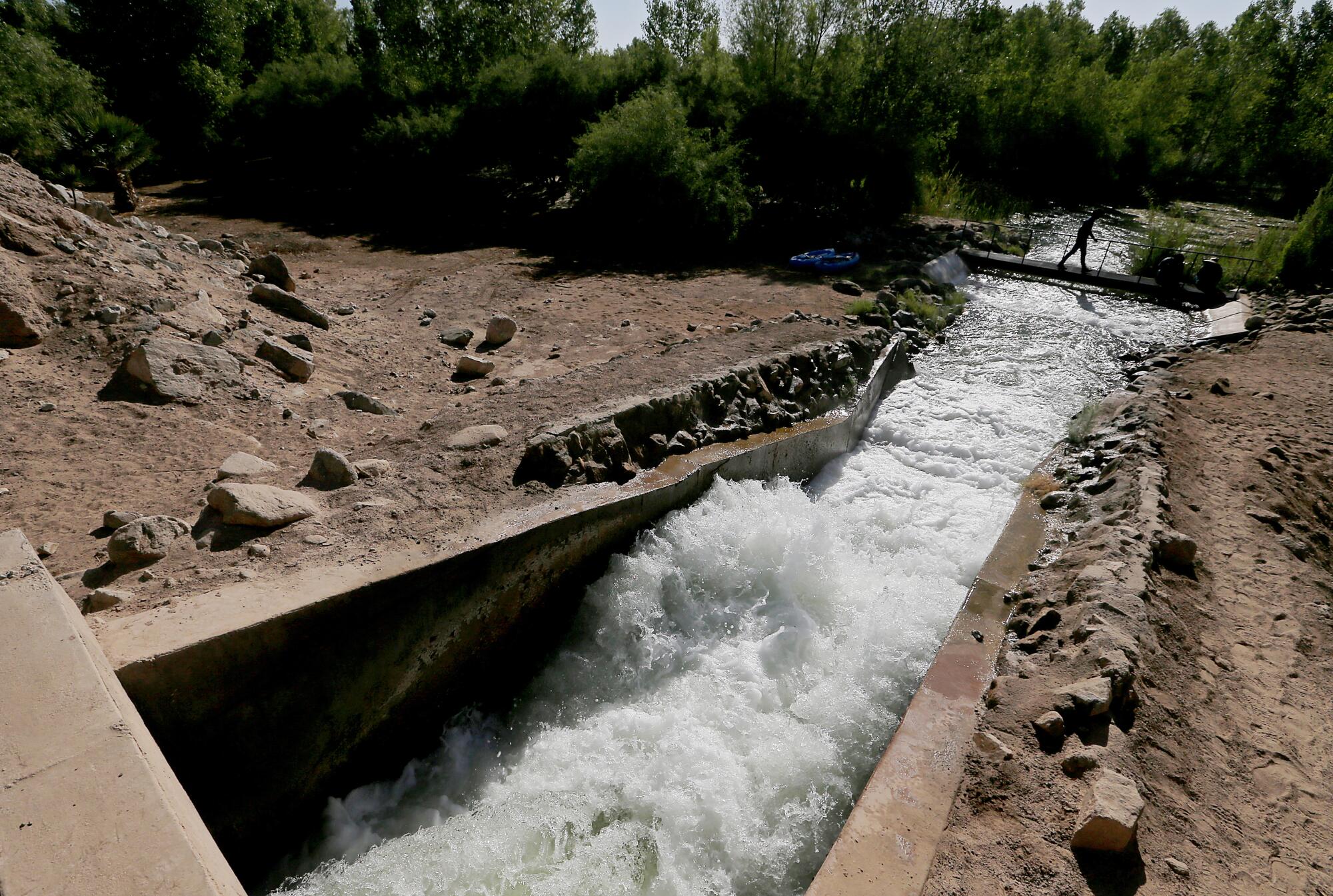
“The river was almost dead for so many years. And right now, this is an historic moment. We are connecting the river,” said Gaby González Olimón, an environmental education coordinator for the Sonoran Institute, one of six groups in a coalition called Raise the River.
She stood watching as the churning whitewater cascaded down the culvert toward the wetland.
This site, a habitat restoration area called El Chausse, is located in the southern portion of the delta, downstream from long stretches of dry riverbed, and was chosen as a place where limited water releases would boost the ecosystem by nourishing vegetation and expanding habitat for wildlife. It’s one of a few sites in Mexico where conservationists have been restoring wetlands and forests along the path where the river once flowed.
Six years ago, workers removed invasive tamarisk trees at the site and planted a forest of native cottonwoods, willows and mesquites. Those trees have grown rapidly and now drape the wetland in shade, attracting a variety of birds, such as yellow warblers, blue-gray gnatcatchers and vermilion flycatchers.
Eduardo Blancas, restoration coordinator for the group Restauremos El Colorado, stepped into a kayak and paddled out in a pond beside the forest.
- Share via
Water is flowing again in parts of Mexico’s dry Colorado River Delta, bringing back a flowing river where there was a sandy riverbed. (Albert Lee / Los Angeles Times)
“The ecosystem deteriorated because of the lack of water. So this whole process is happening and at the same time it’s bringing environmental benefits,” Blancas said. “These ecosystems are going to provide habitat for wildlife.”
This is the second straight year of water releases in Mexico. When the water flowed through part of the delta last year, plants released seeds that settled along the banks.
Blancas and his colleagues have seen vegetation flourish along the river channel. They’ve spotted about 120 species of birds in the area.
“It’s an oasis in the middle of the desert,” Blancas said.
The water releases, which began May 1 and will continue until September, are timed to mimic the vastly larger seasonal floods that once filled the desert valley before the delta was desiccated in the 20th century with the construction of dams in the United States.
More than a century ago, the Colorado River Delta spread across about 2 million acres of wetlands, forests and marshes. When the environmentalist Aldo Leopold paddled the delta in 1922, he described it as “a hundred green lagoons,” with emerald waters and huge flocks of cormorants and egrets soaring overhead.
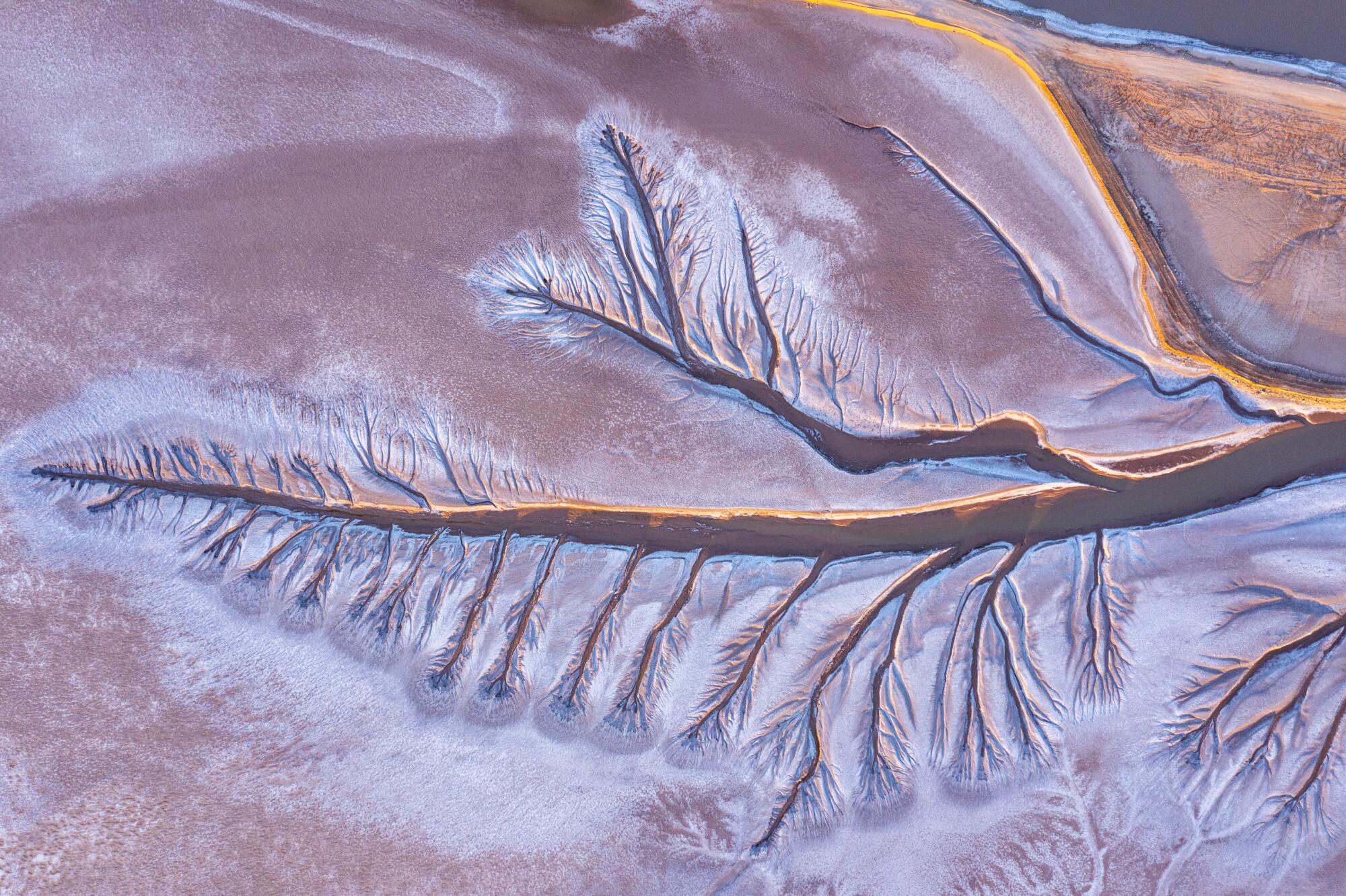
The delta that Leopold saw has long since dried up and disappeared. In its place, fields of cotton, wheat, hay and vegetables fill the Mexicali Valley, hugging meandering stretches of dusty riverbed.
Paddling in the wetland, Blancas pointed out trees that have grown more than 30 feet in five years. He said the forest represents a nature-based solution that can help in addressing the climate crisis.
“These places are big carbon sinks,” Blancas said. And by dedicating a small amount of water to them, he said, the efforts are “contributing our grain of sand with these sites to reduce the effects of climate change.”
Lately, Blancas and his team have seen that beavers are gnawing on tree trunks and building dams. Motion-activated wildlife cameras have captured night images of the beavers swimming and climbing out on the banks. One chomped on a cottonwood tree until it toppled.
A wildlife camera captured a video in April of a beaver gnawing on a tree until it toppled at El Chausse habitat restoration area in the Colorado River Delta in Mexico. (Restauremos El Colorado)
Mexican and American conservationists have made progress over the past decade in securing water for three restoration areas in the upper, middle and lower delta, where they are irrigating trees and sustaining patches of wetlands, forming green islands in the desert.
These efforts represent a dramatic change from decades ago, when the river was completely used up and almost no water was left for nature in the delta.
The river was divided among seven U.S. states starting with the 1922 Colorado River Compact. Mexico secured its share of water, 1.5 million acre-feet per year, under a 1944 treaty.
When the last of the river reaches the U.S.-Mexico border, it pushes up against Morelos Dam, and nearly all the water is shunted aside into the Reforma Canal, which carries water to farms and cities from the Mexicali Valley to the Pacific coast.
South of the dam, the remnants of the river vanish in the desert.
Encouraged by conservation groups, the Mexican and U.S. governments have begun setting aside some water for the environment.
In the largest such experiment in 2014, a surge of water was released through the gates of Morelos Dam. The “pulse flow” totaled 105,000 acre-feet and brought back a flowing river for eight weeks, sending water running to the Gulf of California.
Later, under a 2017 pact called Minute 323, Mexico and the U.S. agreed to spread smaller water releases over several years. Each government agreed to contribute a third of the water, while environmental nonprofits pledged to secure the remainder.
Last year, about 35,000 acre-feet flowed in the delta, and a similar volume is being released this year — amounting to less than 1% of Los Angeles’ total annual water use.
The U.S.-Mexico accord calls for more water releases through 2026.
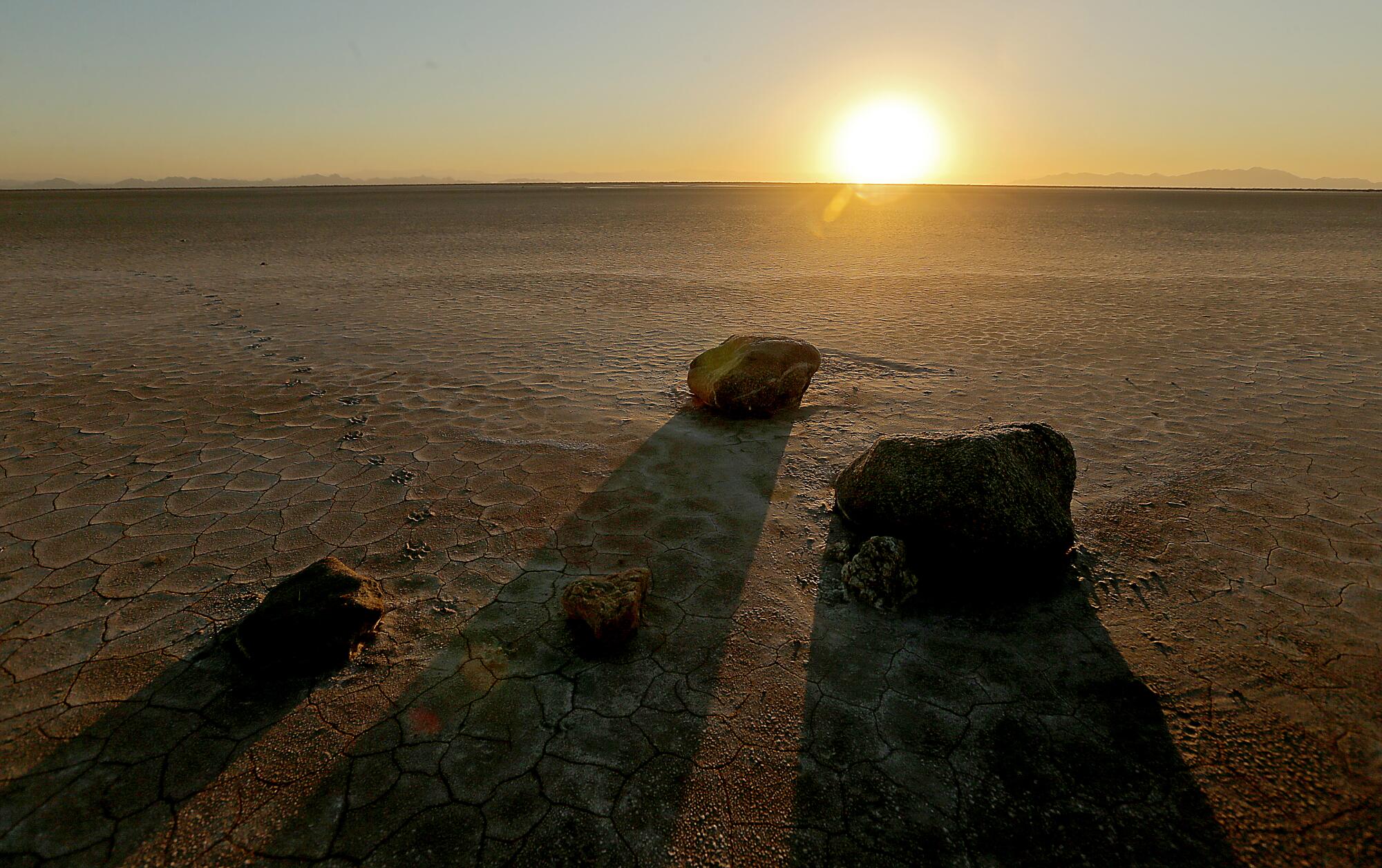
At the same time, the Colorado River is in a worsening shortage. After more than two decades of extreme dryness intensified by climate change, the river’s reservoirs have dropped to record-low levels and U.S. officials have told the seven states that take supplies from the river to make plans to drastically cut water use.
Mexican farmers have already seen their water allotments reduced by nearly 5% this year, and more cuts will likely be needed to deal with the shortages.
The river’s decline has raised concerns among some of those who are leading the restoration efforts. They worry that if the crisis isn’t managed effectively, it could jeopardize progress in the delta.
“Anything that’s water-dependent that doesn’t have a water right is at risk,” said Jennifer Pitt, director of the National Audubon Society’s Colorado River program.
Pitt said she understands that the unprecedented water cuts will be hard, but she hopes the U.S. and Mexico can continue collaborating so that “the environment, which uses such a very small amount of water, can continue to be part of that solution.”
This month, water has been flowing from a canal through three irrigation gates, filling the river channel and continuing toward the Gulf of California.
Downstream from the release sites, González and her colleagues parked their pickup beside a newly formed pond.
The calm water reflected the sky like a mirror. Red-winged blackbirds sang, and pairs of scarlet dragonflies circled over the water.
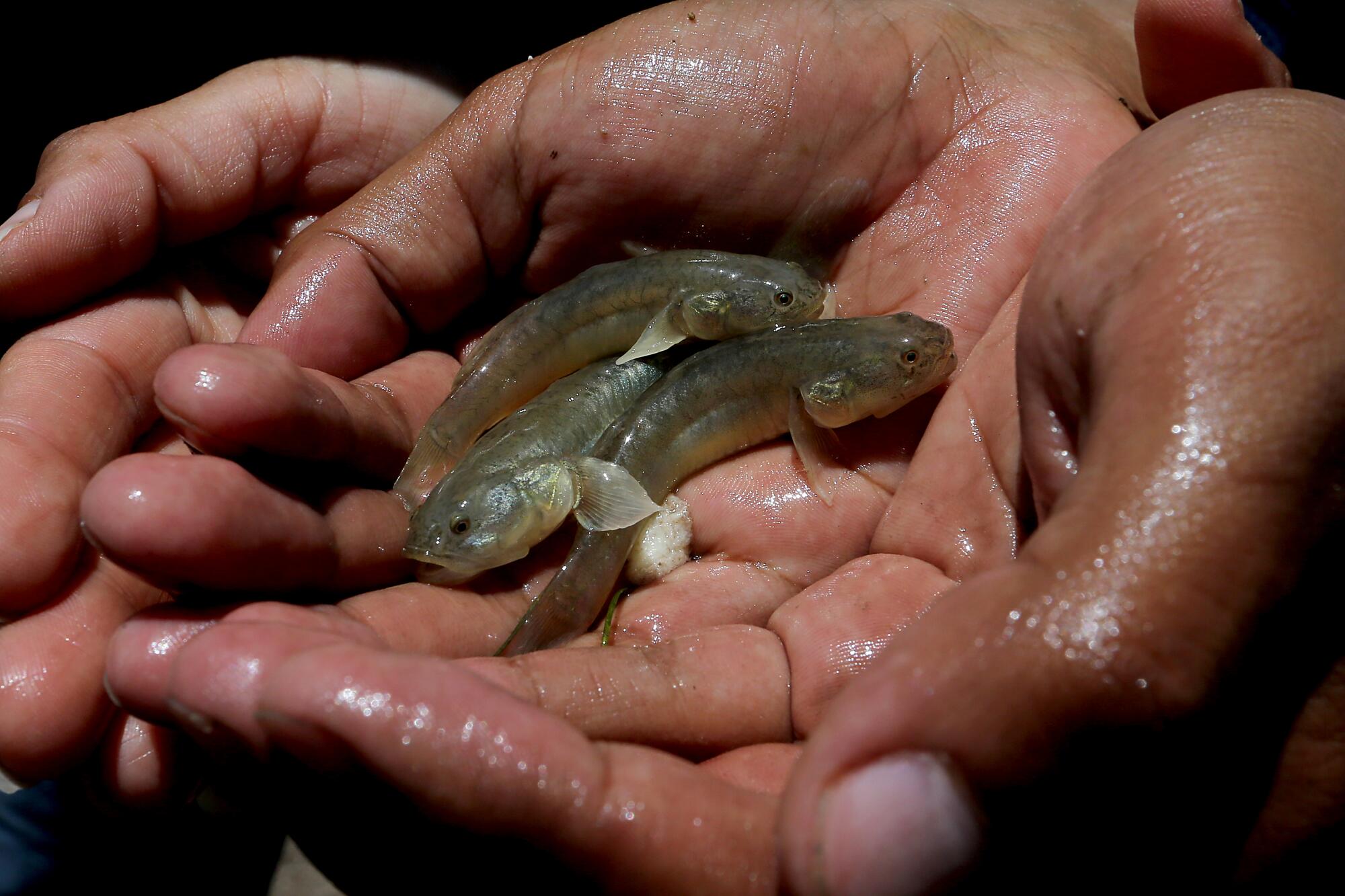
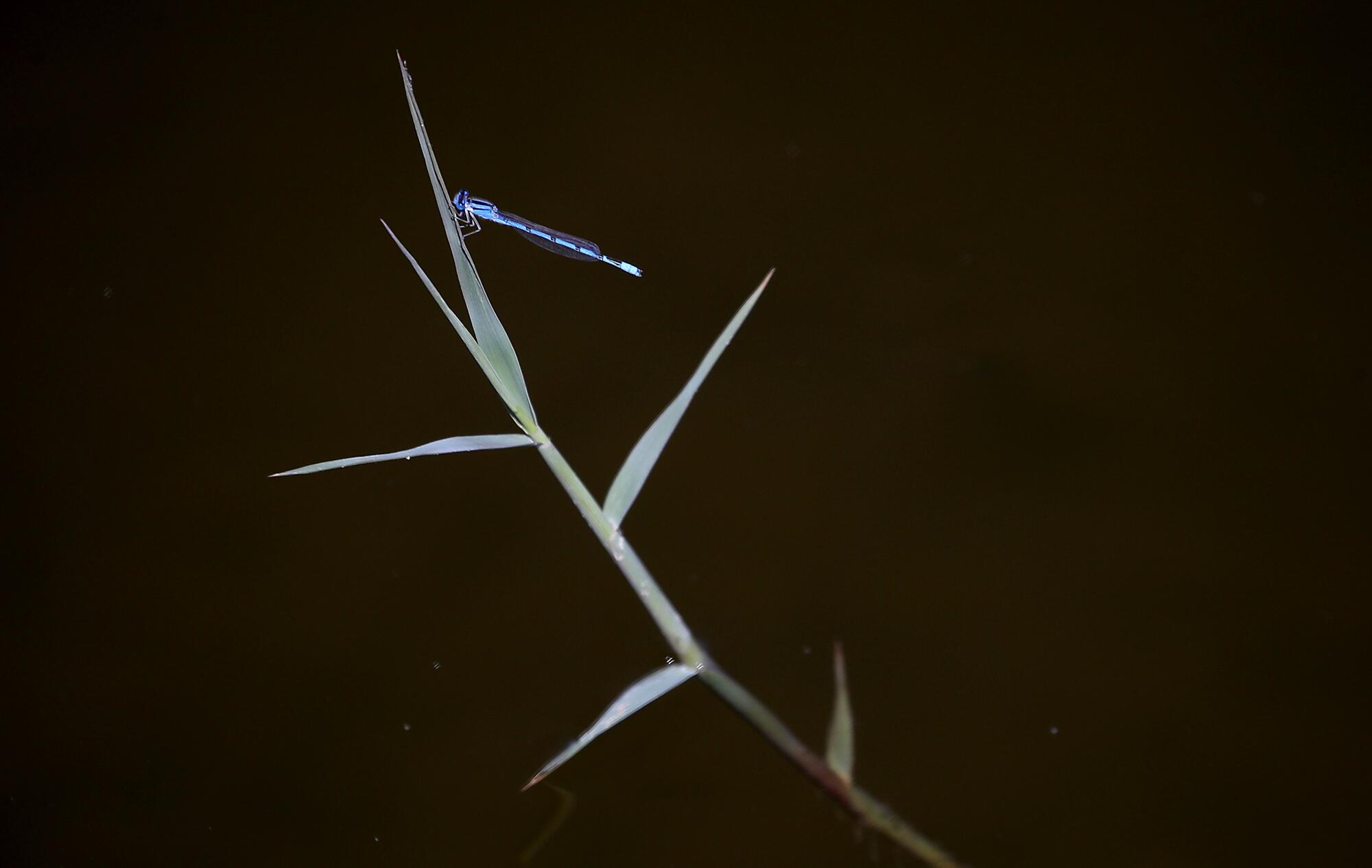
“Water definitely changes the ecosystem a lot. This place was a very big sand bed a few weeks ago,” González said. “You can see the whole ecosystem coming to life.”
While complete restoration would be impossible, she said, patches of watery habitat can bring major ecological benefits.
“We are building this green corridor,” she said, “connecting the river and the estuary.”
González said she also feels happy seeing families come to enjoy this place on weekends, their children wading in the water and experiencing their first contact with the Colorado River.
A long-standing connection to the river is reflected in the local culture. People from Mexicali proudly call themselves “cachanillas,” after the hardy plant arrowweed, which flourishes near water and which the area’s early inhabitants used to build huts.
The dewatering of the delta has altered life for people who live along the river, among them the Native Cucapá (or Cocopah), who traditionally depended on fishing.
Angela Melendez said her family came from southern Mexico and moved to a modest home by the river, where her grandfather fished.
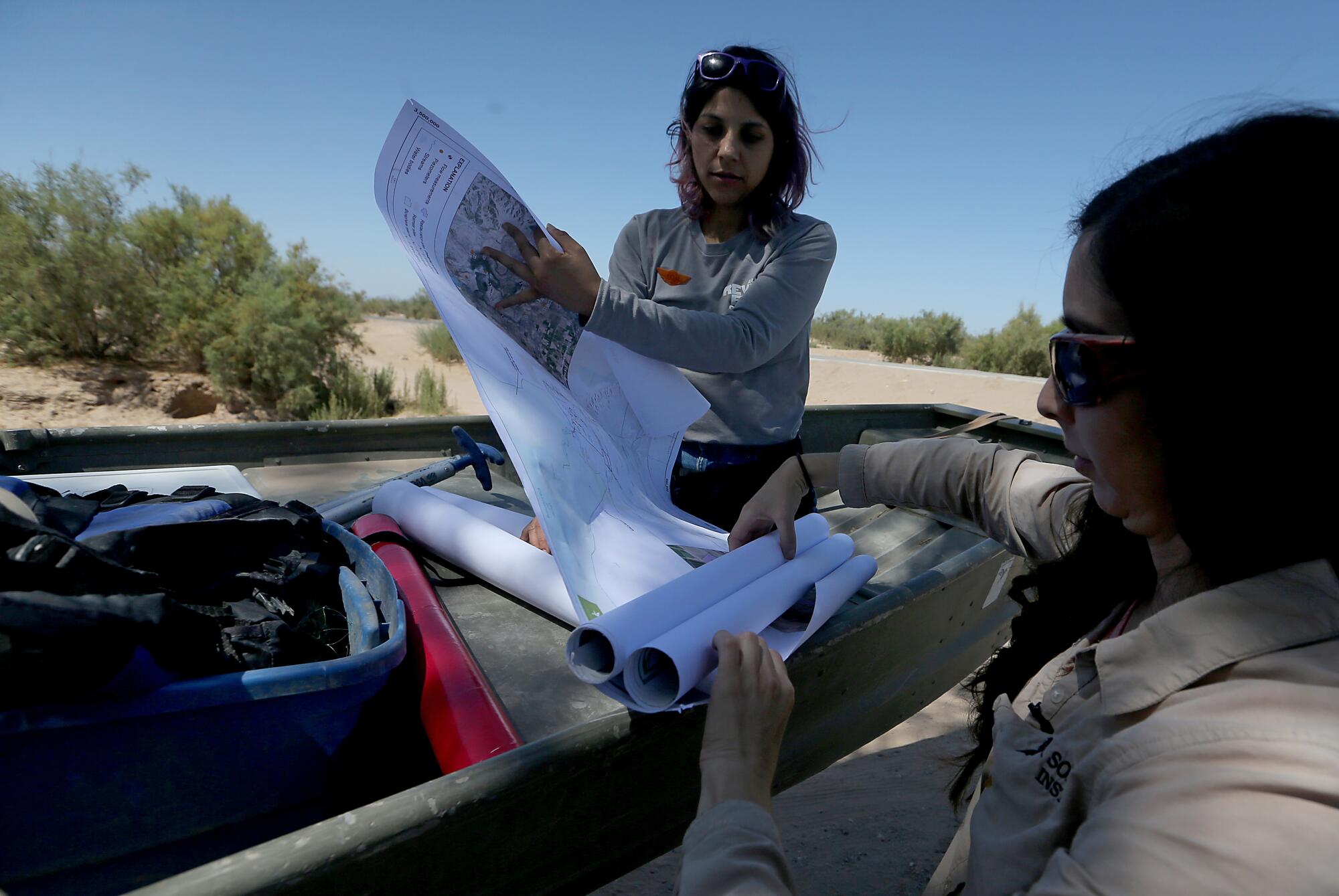
“They had fish, all the fish they could eat, all the lobster and shrimp they could eat sometimes,” Melendez said.
Melendez said her mother told her that during her childhood in the late 1960s and early ‘70s, she would swim in the river. Once when she was swimming, she was caught in the current and swept downstream to a Cucapá community.
“I’m going to bring her here, because she used to enjoy these places,” Melendez said, standing by the pond. “She’s going to cry like me.”
Tears welled in her eyes. She said seeing the river restored would probably transport her mother to a good time of her life, before the area’s environment deteriorated and dried up.
Melendez, who works as a geographic information systems coordinator, has been flying a drone to capture images of the river’s return in the southern part of the delta.
Near what was once the river’s mouth, desert brush grows beside crusty salt flats.
At the edge of the estuary, Israel Mateo Sánchez Leyva stepped into a boat to collect fish for a biological survey. Sánchez, a technician who does ecological monitoring, pulled up a trap with small fish flapping inside.
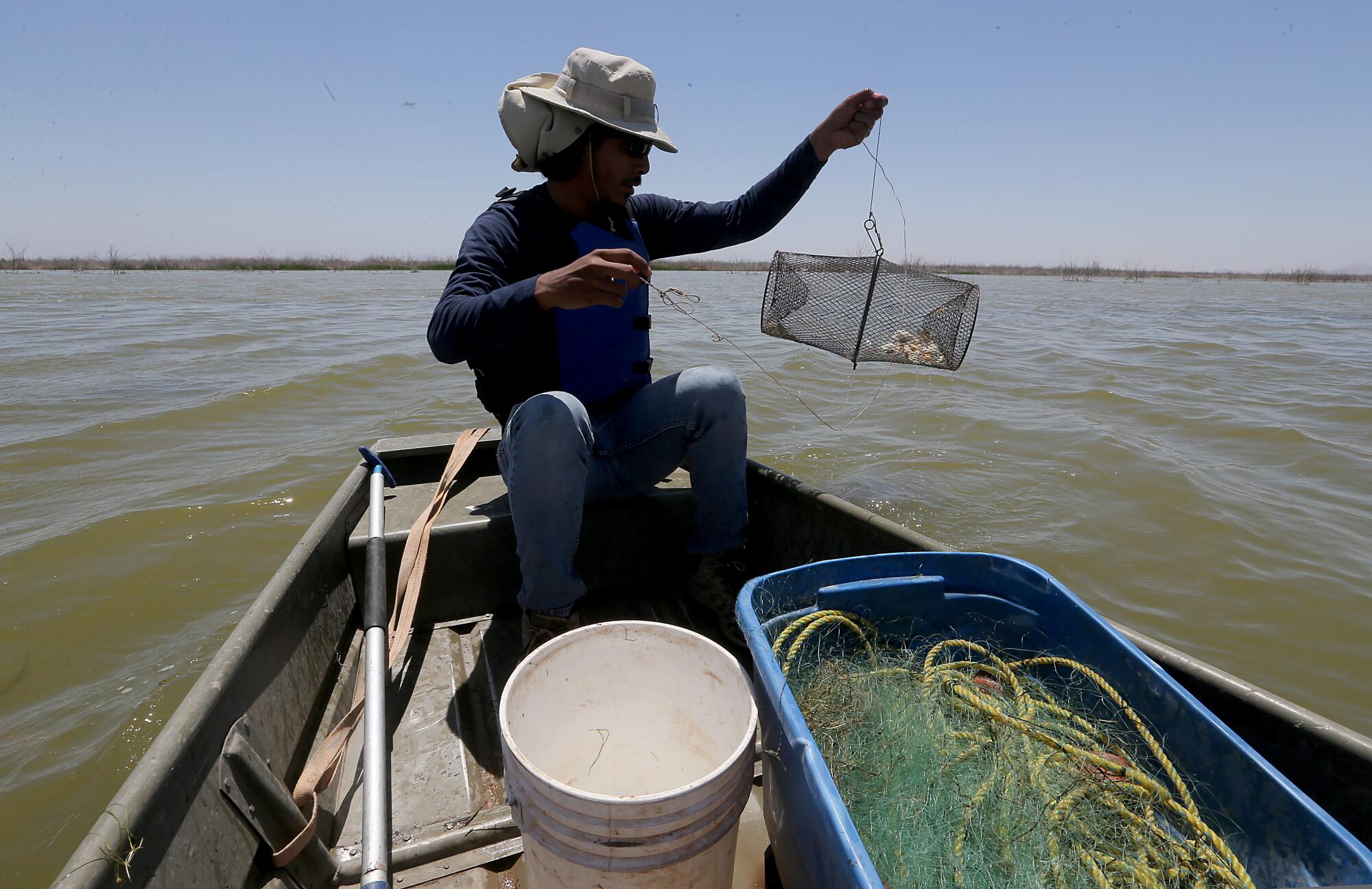
From the metal trap, he dropped a thumb-sized fish into a bucket. It’s a delta mudsucker, he said, a species that has been rebounding.
“This is a great success,” Sánchez said. “We are giving life to the last part of the Colorado River, and we are bringing back the ecosystem.”
He said he has noticed new patches of tules growing by the estuary, indicating the water releases have reduced the salinity.
The team from the Sonoran Institute has been tracking the released water on its slow crawl down 40 miles of river channel toward the sea.
Last week, during high tide, this piece of the Colorado River finally reached the sea again.
More to Read
Sign up for Essential California
The most important California stories and recommendations in your inbox every morning.
You may occasionally receive promotional content from the Los Angeles Times.













